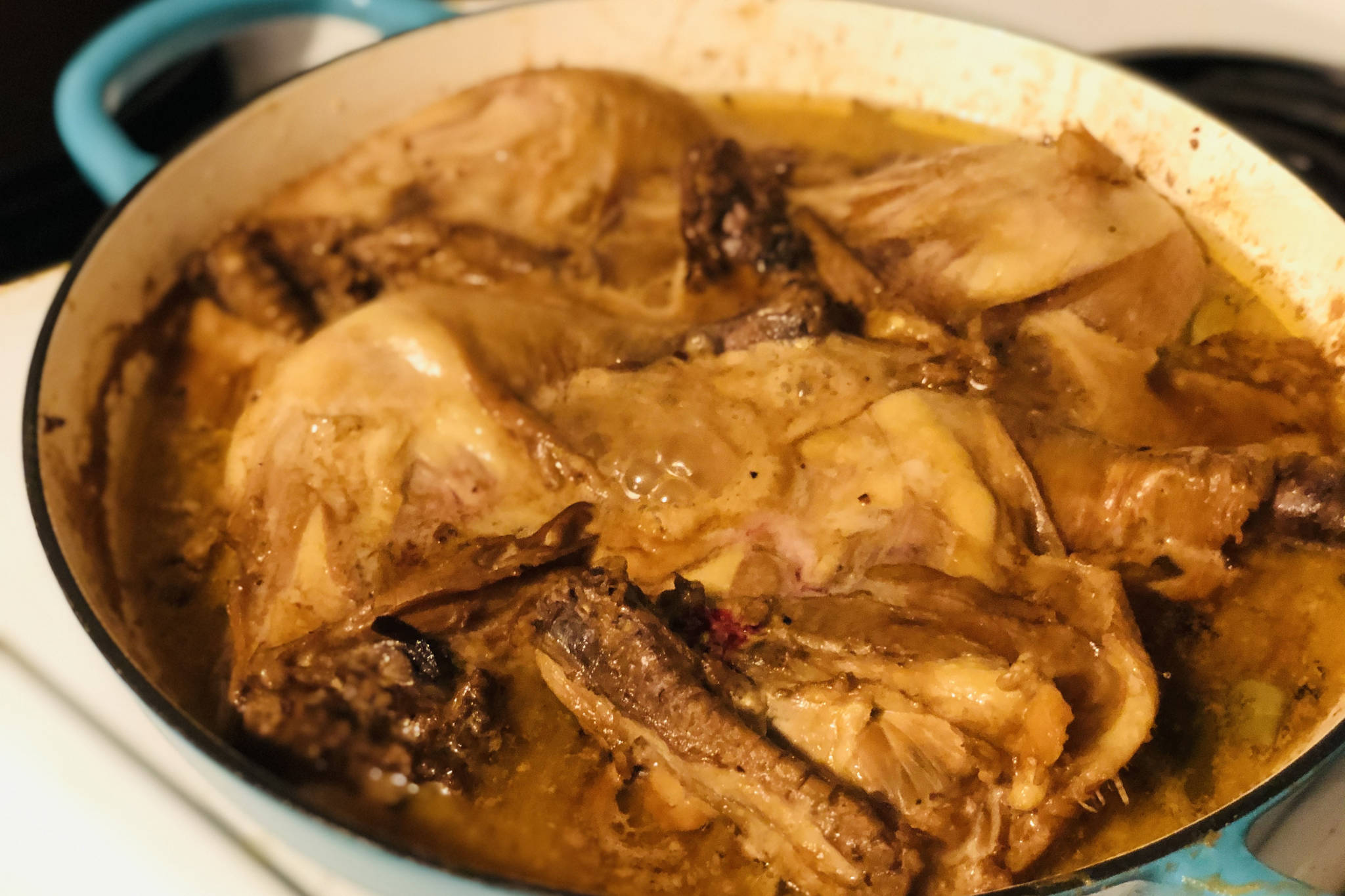By Victoria Petersen
For the Peninsula Clarion
This morning when I woke up, the smell of chicken adobo was still in the air. Not complaining, the smell is incredible — black peppercorns, coconut, roast chicken and a slight punch of vinegar.
Adobo refers to a way of cooking originating in the Philippines. The Spanish who colonized the island archipelago saw the method of stewing with vinegar and called it adobo, because of the small similarity it has with Spanish adobo. Filipino adobo is a dish all its own, though, and distinct from European adobo. The main ingredients are endemic to Southeast Asia: vinegar, soy sauce, fish sauce, black peppercorns and bay leaves. It’s a versatile dish in the Philippines, with various versions of the dish across the country. The stew is often cooked with pork and chicken, and sometimes vegetables.
My therapist asked me yesterday what world culture I find the most interesting. My answer was the Philippines. I am not Filipino, but growing up in Anchorage, I was exposed to the culture and cuisine at an early age. I have always been intrigued by the clash of Chinese, Malay, Spanish and American influences, and how that impacts food. I spent one month in the Philippines when I was in college, and stayed with a friend who was going to school there. It was one of those times in our life where you can feel yourself growing up and widening your perspective. Looking back, I sometimes find it hard to believe I was capable enough at 20 to backpack through Asia. Whenever I feel scared or unworthy or unable, I think about sitting on the back of a motorcycle, riding fast past rice paddies as the noon sun and wind dry my salty sea hair.
I ate adobo almost every day while I was on the island of Cebu. In the neighborhood I was primarily staying in, a short walk away, there was a line of permanent tent vendors. For about a dollar, I could get some rice and chicken or pork adobo. It was breakfast, it was lunch and it was dinner. When we were tired of adobo, we would get Korean food. At one point, we even tried a Mexican restaurant. I sprung out and tried many other dishes, too, but I enjoyed trying the adobo in every village we visited. In Barili, we ate our adobo outside, with fresh rice steamed in leaves, with a view of the 400-year-old Sta. Ana Church.
The first time I made adobo was for my family right before I took off on my trip. I think I just Googled a recipe online, and it turned out fine. A year or two ago, I stumbled upon a YouTube video from New York Times Cooking of an adobo recipe by chef Angela Dimayuga. Her recipe is amazing. She uses coconut in three forms, oil, vinegar and milk, and it creates this super silky sauce that you can spoon over the chicken and rice.
All of these ingredients should be at any grocery store, but I’ve found that Save-U-More has some good options for vinegars and oil. Dimayuga’s recipe calls for fresh bay leaves, and they do add a great freshness and taste, but it’s not something we have in the house often. We normally use dried leaves.
Chicken adobo
2 tablespoons coconut oil
15 cloves of roughly chopped garlic
2 teaspoons whole black peppercorns
1 teaspoon ground pepper
1⁄2 teaspoon red pepper flakes
4 pounds bone-in, skin-on chicken
1 cup coconut milk
1⁄2 cup coconut vinegar
1/2 cup soy sauce
8 bay leaves
1. In Dutch oven or large pot (we use a braising dish, but you’ll want something that can hold all the chicken and a good amount of liquid), heat the coconut oil over medium heat until it starts to shimmer. Add the garlic, peppercorns, ground pepper and red pepper flakes.
2. Lower the temperature to medium-low and cook the spices until the garlic is toasty and soft, about five minutes or so.
3. Raise the temperature to medium-high and add chicken skin-side down. Cook for about five minutes, when the fat starts to render.
4. Add in the bay leaves, coconut milk, coconut vinegar, soy sauce, and 1 cup of water. Let it all come to a boil, and then reduce the heat to medium low, simmering until the chicken is tender, about one hour. Stir the contents of the pot at the halfway point.
5. After an hour, turn the heat back up to medium-high and allow the sauce to thicken into a silky gravy for about 15 minutes. Place a piece of chicken on a bed of rice, spoon over the sauce and enjoy.

